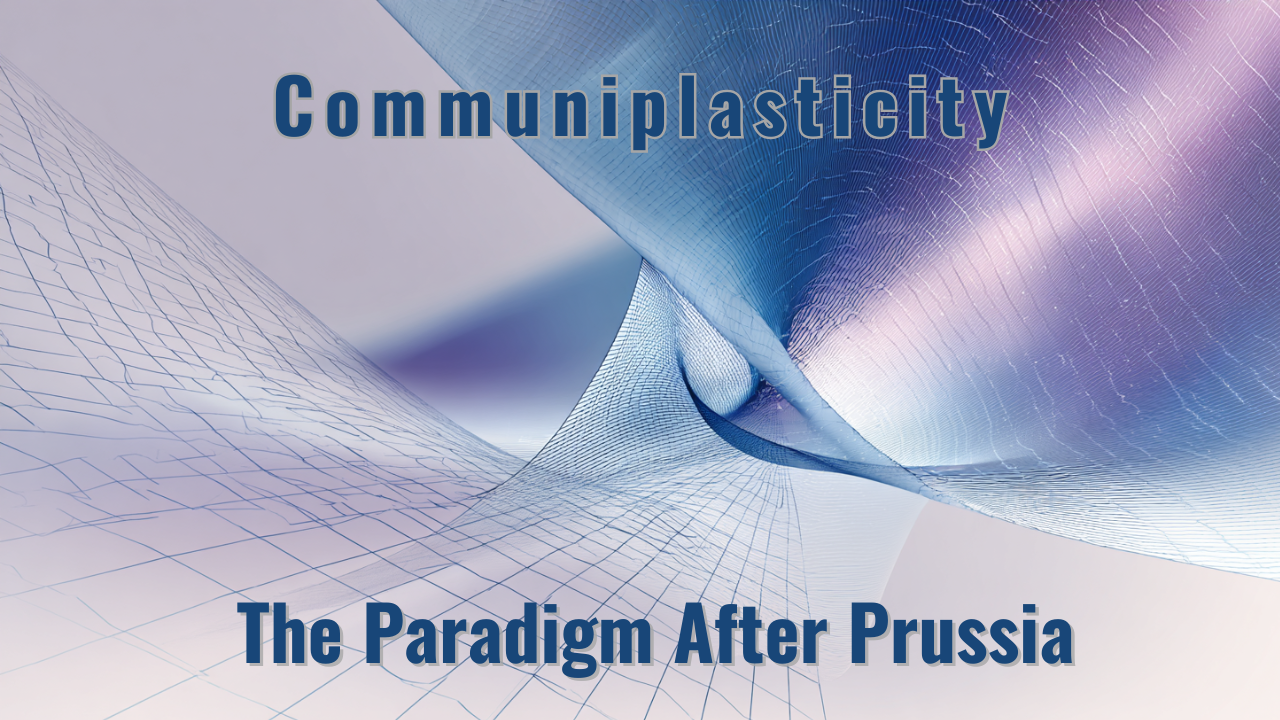Communiplasticity: The Paradigm After Prussia
Nov 23, 2025
Walk into almost any classroom in the Western world and you see the same structure. Rows of students. A single instructor. A lesson plan delivered from the front of the room. Walk onto almost any tennis court and you see it again. A coach explaining. A player listening. A progression that moves from simple to complex, as if learning were a conveyor belt.
This structure didn't appear by accident. It came from the Prussian model of the early nineteenth century. The same model Horace Mann imported when he built the common school. Europe kept its own variations. Over time the model spread into sport, music, corporate training, and almost every place where one person is expected to guide another. The idea behind it was simple. Create order. Create consistency. Create citizens who can follow the rules of an industrial society.
It worked for the world it was built for. It doesn't fit the world we live in now.
The Assumption That Broke
Thirty-five years on court taught me something I didn't expect. The old system assumes learning is predictable. It assumes people respond the same way to the same message. It assumes information flows in one direction and that delivering it produces understanding.
Anyone who coaches, teaches, leads, or parents knows this is not how humans actually work.
The Shift In Perspective
Communiplasticity begins with a different starting point. The important thing is not the message. The important thing is the mind trying to receive the message. Some people think in pictures. Some think in rhythm. Some learn by moving. Some learn by talking it through. Some stay calm under pressure. Some do not.
If the signal doesn't match the receiver, the message is lost. This is the heart of Communiplasticity. It's not a teaching style. It's a communication architecture. The person in front of you becomes the operating system. Your job is to design for them, not teach at them.
Where The Old System Breaks
The Prussian model assumes uniform delivery creates uniform results. It assumes the coach or teacher knows what to say and the student needs only to absorb it. That worked when societies rewarded compliance. It worked when the goal of education was to create predictable workers. We don't live in that world now.
A tennis player doesn't fall apart in matches because they forgot a technical instruction. They fall apart because perception, emotion, and attention break down under stress. A child in school doesn't lose interest because they lack ability. They lose interest because the signal never reached them in a form they could use. People do not grow because they are told to grow. They grow because someone finally speaks in a way their mind can convert into action. That is the work Communiplasticity tries to make visible.
Why Tennis Exposes The Problem
Tennis punishes bad communication instantly. A coach can feed balls from a basket and get perfect technique. The same kid steps into a match and the entire structure collapses. The failure is not mechanical. The failure is architectural.
Coaches talk. Players nod. Everyone leaves believing the work was done. Then the match shows what actually happened. The signal did not land. The message did not convert. This gap between what was said and what was received is where development dies.
Why This Matters Beyond Tennis
Europe already senses the Prussian skeleton is outliving its usefulness. There is universal agreement that the rush to the yellow ball is hurting kids. There is universal agreement that early-stage development needs to be more playful, more perceptual, more multi-sport. There is universal agreement that parents need better guidance and coaches need better communication tools.
The Blue, Red, Orange, and Green stages are an admission that learning is developmental, not chronological. The conversations happening in federations and clubs show a growing desire for a system that respects how children actually take in information.
Communiplasticity fits into this moment. It doesn't reject structure. It reshapes structure around responsiveness.
The System Built For This Century
The old system built citizens. The new system must build decision-makers. The old system built consistency. The new system must build adaptability. The old system believed the teacher was the source of truth. The new system believes the interaction is the source of truth.
Communiplasticity is not a theory. It is an architecture for guiding humans in complex environments. It works on a tennis court. It works in a classroom. It works in a startup. It works anywhere a signal must cross a human boundary and survive.
The Paradigm Shift
The Prussian model built the age of instruction. Communiplasticity builds the age of attunement. If we want performers who can adapt, coaches need architecture that adapts first. That shift is already happening in the minds of coaches, parents, educators, and players who sense that the old tools are no longer enough for the world in front of them.
The next paradigm isn't coming. It's here.
Never Miss a Moment
Join the mailing list to ensure you stay up to date on all things real.
I hate SPAM too. I'll never sell your information.
